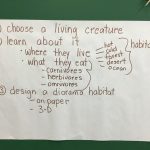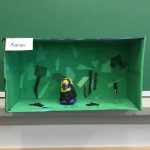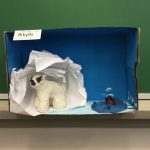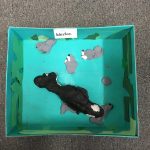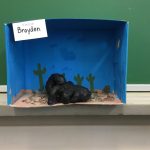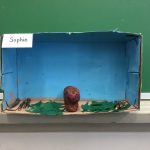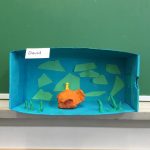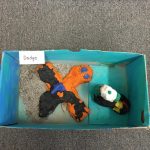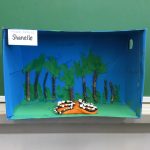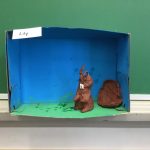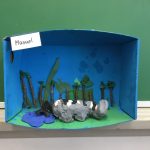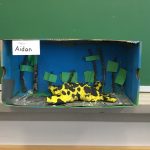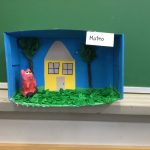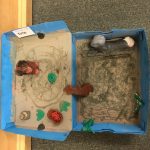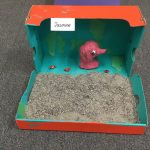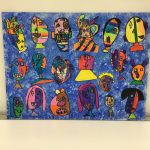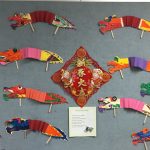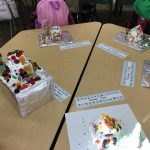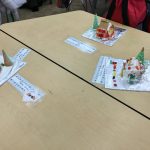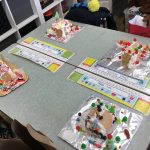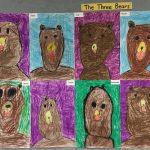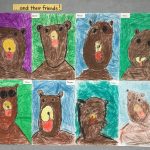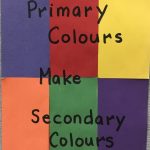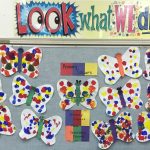Category: Art Programme
The Class in the Hats – Division 6
Animal Habitat Dioramas
Students began by looking through science books and thinking about what sort of animal they were interested in studying. They then looked at the sort of habitat in which their chosen animal would survive.
Students created their animal out of plasticine of various colours, due to our supply, and then learned how to meld the correct colour of plasticine as a coating on top. They used photos of their animals as their models. They did a great job!
The inside of the shoe boxes were painted to represent the parts of their habitat (sky, grass, jungle, desert, etc.). Students decided what they needed to complete their habitats. I got various supplies for them (coloured papers, coloured plasticine, liquid glue, hot glue gun) and they collected natural materials (sticks, stones, sand).
I enjoyed watching their creations develop. They are now completed and on display along the window ledge in the Library. You can see them there if you are attending the Volunteer Tea tomorrow afternoon. I have taken pictures of each which are below.
Daffodils with our Buddies!
St. Patrick’s Activities
We created three layered shamrocks with construction paper. Students used tracers and cut out three different sizes of shamrocks. They used oil pastels to colour patterns onto each section. They were limited to using various colours in greens, blues, and purples. Once coloured the three layers were glued together.
Students created rainbow wishes to be made in the event they were to catch a leprechaun. Each student made a list of six wishes which were printed – one on each of six coloured papers. These were attached to a cloud with a poem about leprechauns on it.
Both of these activities are posted on our bulletin boards in the hallway outside of our classroom. Please check them out when you are at school.
Arts Alive – Burnaby Art Gallery
Every year the Burnaby Art Gallery hosts an art show (called Arts Alive) featuring works by Burnaby students. They alternate the years by secondary and elementary grades. This year it is the elementary schools’ turn to participate. Teachers choose whether to participate, or not. Four classes at Rosser have opted into participating this year. Each year there is a theme for the art pieces; this year it is Art and Math.
Our class worked through the process of creating a group art piece by looking into the works of Pablo Picasso. We read a story called, “The Girl With the Ponytail”, which is about Picasso and his series of work centred around one model named Sylvette. We looked at a variety of his art pieces and at how he used many different shapes (our math connection) instead of typically-created faces.
Students created a few different faces, in different sizes, with black Sharpie pens. They coloured the faces in with a variety of waxed crayons. They chose their favourite piece to be included in our art piece.
We were allowed to create a piece that is 18” x 24” so we used a canvas of that size. The grade one girls painted it with one hue of blue paint. They then used sponges to add layers of other tints/shades of blue paint, as well as some white paint, to form the backdrop. On top of this the students’ individual art-created faces were glued.
The jury from the Burnaby Art Gallery will be coming to Rosser on Monday, March 4th to look at our school’s four entries. They will take photos which will be a part of their digital display. They will also, hopefully, take the pieces back to be a part of their month-long display in their gallery. I will keep you informed of the process. In the meantime, please take a look at the finished work.
Lunar New Year Dragons
Gingerbread House Building
The Three Bears … and some of their friends
Primary Colours – Bernard, the Butterfly
Students have been learning about colour theory through our explorations in Art. Two weeks ago they learned about the three primary colours – red, yellow, and blue – and created pictures using just those three crayons. On Friday we used the primary coloured paints. They heard a story about a mischievous butterfly who got into Mother Nature’s way while she was painting a garden and ended up being very colourful. They then experimented with paints and a butterfly shaped paper. They put dabs of paint on one side of their paper, folded the paper closed, and rubbed the two sides together. The results were many (mostly) symmetrical butterflies. They made construction paper bodies which they glued onto the wings today when they were dry. The addition of pipe cleaner antenna finished the look. Students were encouraged to try and have the primary colours close in some spots so that they could flow together to create the secondary colours – green, orange, and violet (purple) – when pressed together.
These are on the bulletin board at the back of our classroom.



